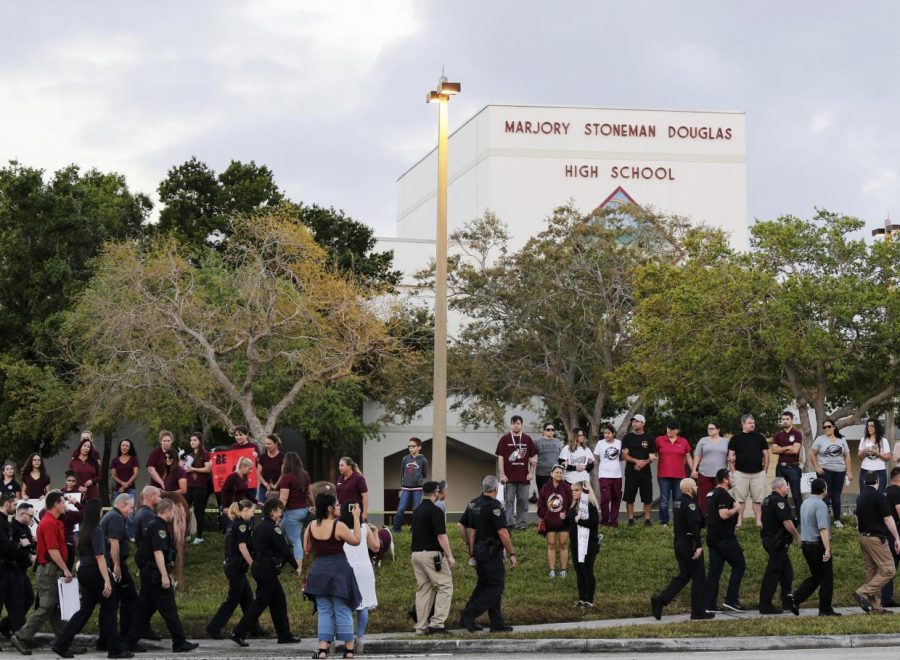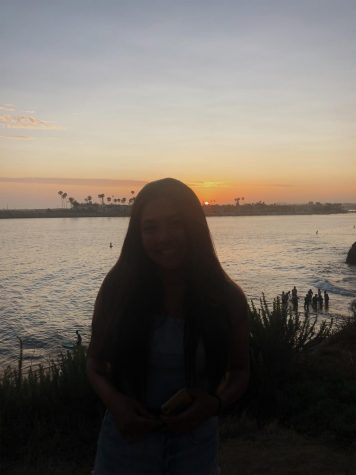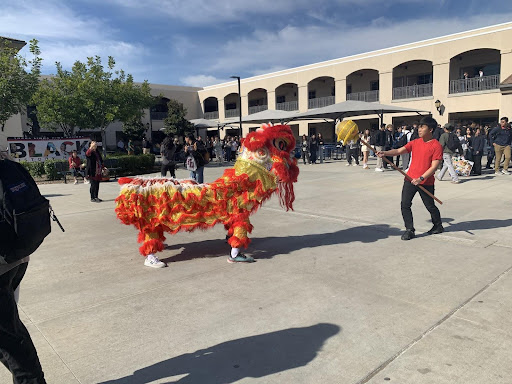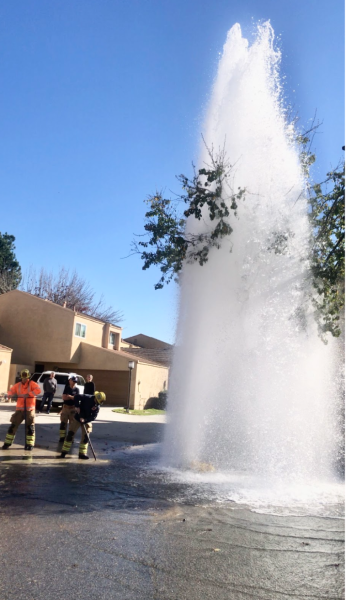School Shootings: A New Fear and the Copycat Effect
The photo is taken two weeks after the shooting that took place at Marjory Stoneman Douglas High School. Students bring posters and flower to commemorate those who were lost.
March 26, 2018
School shootings have become an increasingly prevalent issue nationwide, with the US leading in the highest number of school-related shootings in the world. Because of these horrendous attacks, parents, students, teachers, and administrators are living in constant fear for the safety of American schools. With terrifying events such as the Sandy Hook Elementary School Shooting in 2012 and the Florida School Massacre in February, school shootings and threats are surrounded by a media firestorm. Since these events, a stream of copycat threats and possible shooters are surfacing across the nation.
The world has been on edge since the shooting at Marjory Stoneman Douglas High School in Parkland, Florida, an event that led to the death of 17 people and 15 wounded. Students fear for their safety on school campuses, parents have growing apprehension in sending their children off to school, and school administrators are taking a proactive response in ensuring safety on campuses. While the highly reported event is forcing schools to take precautions in keeping their students and staff safe, it has also possibly led to an increase in threats and possibly copycat assailants.
The Florida shooter has become a household name, earning an unbelievable amount of notoriety and fame. Sensationalizing and focusing on the perpetrator is a longstanding practice in the news and media. By extensively covering these villains, they gain not only attention but also become heroes for some alienated students. (Vox) The intensity of the focus on the shooter is suggested to be causing a chain reaction known as the copycat effect. A 2015 study illustrated that following a shooting, there is an increased chance of another occurring within two weeks of the initial incident.
Especially given the extensive media coverage of shooters, school-related shootings are contagious. Some children and adults who feel like outsiders and alone are inspired to become perpetrators themselves. They watch as shooters become infamous and they wish to experience the same popularity. Others prey on the newfound fear from the previous shooting. Perpetrators sometimes attack the school while others make horrendous threats.
The PYLUSD experienced major fear after threats of a school shooting at Yorba Linda High School and Valencia High School broke out. While the threats were later discovered to have no validity, it caused major fear in parents and students thus many were not in attendance at school the next day. Jayden Hawley (10) commented on the situation saying, “It was really scary, I almost didn’t come to school.”
Regardless of whether or not perpetrators attack or only threaten, school shootings are incredibly dangerous and must be stopped. With statistics showing a school shooting occurring an average of once per month in the US, more ways to stop this must be brought into the conversation. An incident as horrendous as these shouldn’t have to happen in order for change to occur.





















